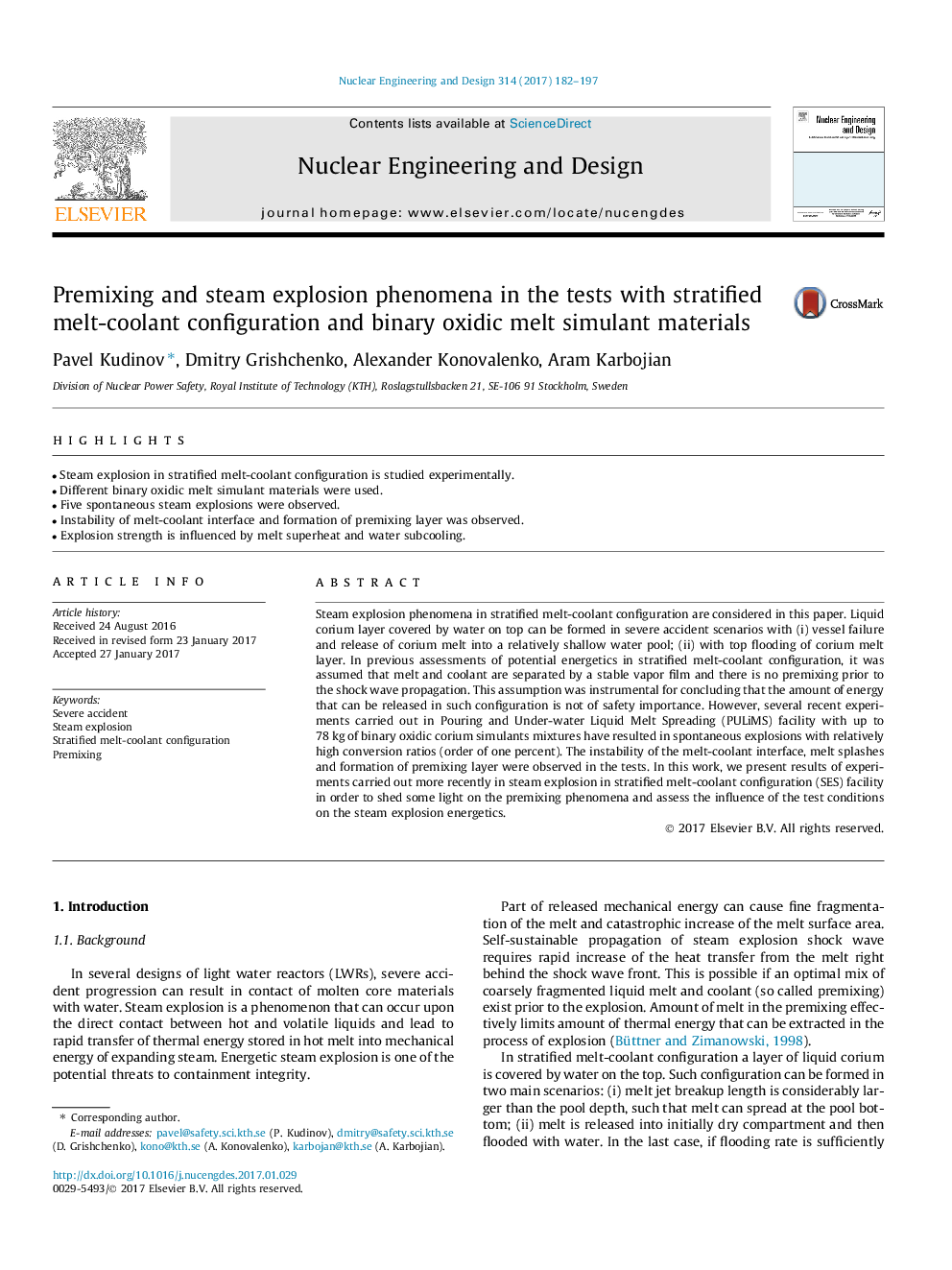| Article ID | Journal | Published Year | Pages | File Type |
|---|---|---|---|---|
| 4925716 | Nuclear Engineering and Design | 2017 | 16 Pages |
Abstract
Steam explosion phenomena in stratified melt-coolant configuration are considered in this paper. Liquid corium layer covered by water on top can be formed in severe accident scenarios with (i) vessel failure and release of corium melt into a relatively shallow water pool; (ii) with top flooding of corium melt layer. In previous assessments of potential energetics in stratified melt-coolant configuration, it was assumed that melt and coolant are separated by a stable vapor film and there is no premixing prior to the shock wave propagation. This assumption was instrumental for concluding that the amount of energy that can be released in such configuration is not of safety importance. However, several recent experiments carried out in Pouring and Under-water Liquid Melt Spreading (PULiMS) facility with up to 78Â kg of binary oxidic corium simulants mixtures have resulted in spontaneous explosions with relatively high conversion ratios (order of one percent). The instability of the melt-coolant interface, melt splashes and formation of premixing layer were observed in the tests. In this work, we present results of experiments carried out more recently in steam explosion in stratified melt-coolant configuration (SES) facility in order to shed some light on the premixing phenomena and assess the influence of the test conditions on the steam explosion energetics.
Related Topics
Physical Sciences and Engineering
Energy
Energy Engineering and Power Technology
Authors
Pavel Kudinov, Dmitry Grishchenko, Alexander Konovalenko, Aram Karbojian,
